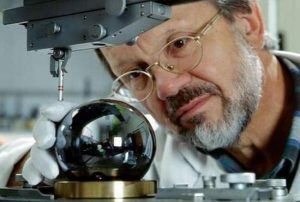A team of inventors from the University of Central Florida have created a new supercapacitor, which has a flexible structure. This device is able to accumulate a significantly larger amount of energy compared to similar devices. An important quality feature of a supercapacitor is that it is able to undergo the recharging process about thirty thousand times without reducing performance.
 The invention of scientists may lead to a technological revolution in the field of mobile development and production of electric cars.
The invention of scientists may lead to a technological revolution in the field of mobile development and production of electric cars.
A representative of the University Nitin Choudhary claims that in the case of replacement of traditional batteries in mobile phones for supercapacitors, the charging would occur in just a few seconds, and it would be enough for at least a week of active use.
In light of the advanced technology owners of modern gadgets are increasingly faced with the problem of very rapid discharge of their phones. A great alternative to the usual lithium-ion batteries would be the latest invention. But for this supercapacitor should substantially increase in size so he was able to hold a sufficient amount of energy.
 The basis of the supercapacitor is millions of special threads having a thickness of about one nanometer.
The basis of the supercapacitor is millions of special threads having a thickness of about one nanometer.
The surface of strands densely covered with two-dimensional materials as a protective shell. As a result of development of this design, scientists have obtained core with high conductivity, which makes possible rapid transfer of electrons. It is the high conductivity of the core provides fast charging devices from the supercapacitor. Two-dimensional materials the sheaths of the filaments significantly condense energy and increase the specific power of the device.
A characteristic of the innovative device does not change after 30,000 rarefactions and charges. For comparison, lithium-ion battery without altering the properties is able to charge a little more than a thousand times. Significantly increased lifetime of the supercapacitor makes it extremely economical and reliable. In addition, the device does not require electric current from the network, using free energy from the sun.

